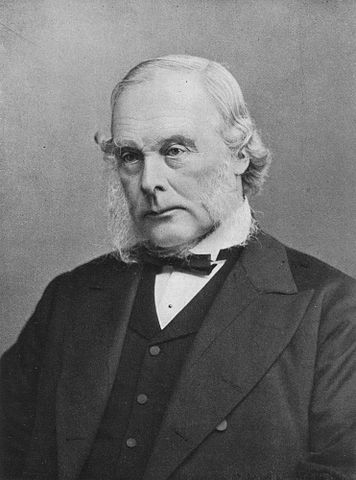| Joseph Lister | |
|---|---|
 |
|
| Surgeon | |
| Specialty | Microbiology |
| Born | Apr. 5, 1828 Upton, Essex |
| Died | Feb. 10, 1912 (at age 84) Walmer, Kent |
| Nationality | British |
Joseph Lister best known as Sir Joseph Lister was popular British surgeon and a pioneer of antiseptic surgery. He applied Louis Pasteur advances in microbiology and he promoted sterile surgery when he was working at Glasgow Royal Infirmary. Lister managed to successfully introduce carbolic acid (now phenol) to sterilize the surgical instruments and also to clean wounds. This discovery led to the reduction in post-operative infections and also made surgery very safe for patients.
Lister’s Early Life
Lister was born on April 5, 1827 in England into a very prosperous Quaker home. His father was Joseph Lister who is a pioneer of achromatic object lenses for compound microscope. His father was also a wealthy wine merchant and a student of mathematics and Latin. When he was a young boy, he studied fish and small animals. He attended Quaker schools, where he became very fluent in the French and German languages. These two languages were the leading languages in medical research.
When Joseph Lister was a teenager, he attended Grove House School in Tottenham where he studied natural science, mathematics, and languages. He later joined University College London. During this time, only a few schools accepted Quakers. At first, he studied botany and earned a Bachelor of Arts degree in the year 1847.
Early Career
After this, he became a registered medical student and managed to graduate with honors. At the age of 26, he joined the Royal College of Surgeons. Lister became an assistant of James Syme, a surgeon at a University in Scotland.
In the 1867, he devised the use of carbolic acid as antiseptic. This became the very first widely used antiseptic in surgery. At first, he thought it would prove to be an adequate disinfectant because of its use in easing the strong stench from field irrigated with the sewage waste. Joseph said it was safe since the fields treated with carbolic acid produced no ill effects on the animals that grazed upon them.
Later, he left the Quakers and joined the Scottish Episcopal Church. He married Agnes with whom he spent the next three months visiting several leading medical schools and hospitals in Germany and France.
Working with Antiseptics
Before Lister’s research, many people believed chemical damage from exposures to bad air was the reason behind the infections in wounds. During this time, hospitals were at times aired out during midday in order to prevent the spread on infections. However, facilities for cleaning hands and the patient’s wounds were not provided. Hospitals also practiced surgery under some unsanitary conditions that exposed patients to great risks.
While still a professor at University of Glasgow, Joseph Lister heard about a theory by Louis Pasteur; the theory was about the possible rotting and fermentation that could occur under anaerobic conditions if some micro-organisms were present. He suggested 3 methods fight the micro-organism; filtration, exposure to chemical solutions and exposure to heat. Joseph confirmed Pasteur’s theory with his own experiments. He decided to use these findings to create some antiseptic techniques for wounds.
Friedlieb discovered creosote that was later processed into carbolic acid. Runge had no knowledge of how decomposition occurred. However, the chemical had been used to treat the wood used for railway ties and ships. This was because, it protected wood from rotting. This was later used for treating sewerage in Holland, England and Belgium. This same chemical was used to fight parasites and get rid of odors during cattle plague and cholera.
Joseph Lister decided to test these results of spraying the instruments, dressings with solution and the surgical incisions. He discovered that carbolic acid swabbed on wounds and reduced incidence of gangrene. In 1865, he applied a piece of lint that was dipped in carbolic acid onto a wound of an 11 year old boy. The boy sustained a compound fracture. Four days later, Lister renewed the pad and discovered that an infection had not developed. Six weeks later, the boy’s bone had fused back together. He published his findings in The Lancet.
Joseph instructed surgeons to wear very clean gloves and clean their hands before working with any 5% carbolic -acid solutions. In 1869, Joseph left Glasgow and returned to Edinburgh. Here he continued to develop his methods of antiseptics.
Later Life
Lister moved to London where he was appointed president of Clinical Society of London in 1881. In London he developed a way of repairing the kneecaps with a metal wire. He also developed an improved technique of mastectomy. He later retired and died in 1892.